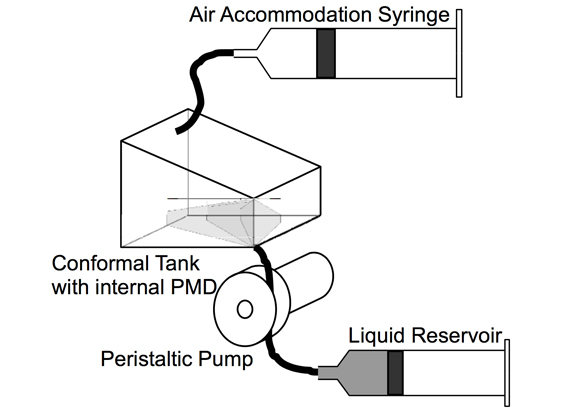Small-sat Propellant Management Technology
PI: Steven Collicott, Purdue University
PI: Steven Collicott, Purdue University

- TA02 In-Space Propulsion Technologies
At the small lengths scales of SmallSats, the traditional spherical and similar axisymmetric geometries for minimum-weight pressure vessels are not required and innovative volume-efficient conformal tanks are legitimate design options. The interiors of the novel new tanks require passive control of liquid propellants as in traditional large satellites and this passive control is performed with surface tension propellant management devices (PMDs). PMDs are sheet metal vanes, traps (sumps), sponges, galleries and screen designed to maintain liquid at the tank outlet, deliver gas-free propellant to thrusters, and control the location of the mass center of the liquid for superior attitude control and efficient use of propellants.
Cubes, cylinders, rectangular parallelepipeds, conformal L-shaped volumes, and similar are combined with internal corners in the expected new generation of volume-efficient SmallSat tanks which require proof of operations in weightlessness. Parabolic flight testing provides an efficient means to rapidly evaluate the zero-g control and draining performance of a new generation of propellant tank geometries and propellant management device design options enabled and necessitated by SmallSats.
• Small satellite missions for NASA and other space agencies
• Small satellite constellations
• Commercial space industry
Technology Details
-
Selection DateREDDI-F1-17B (Apr 2018)
-
Program StatusActive
- 4 Parabolic
Development Team
-
PISteven Collicott
-
Organization
-
SponsorNASA
-
More Information

